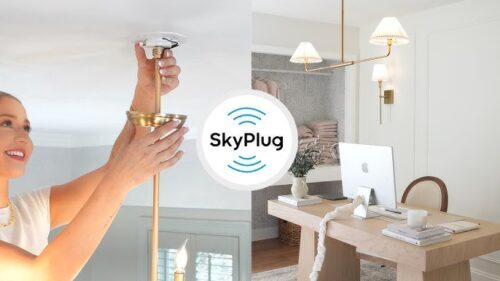Smart lighting offers great benefits, but following safety rules is crucial. Ignoring regulations can cause fires, electrical failures, or legal issues. Installing and maintaining your smart lights the right way keeps them safe, working well, and following local rules.
When you follow lighting rules, you stay safe, save power, and avoid trouble. With this, you need to make sure the electricity is safe, new lights work with old ones, controls are good, and emergency lights are ready. These things help your smart lights follow all the rules.
Read on to learn everything from smart lighting basics to special considerations for different settings, such as homes, businesses, and industrial spaces. This article covers all you need to know about keeping your smart lighting up to code.
Know the Basics of Smart Lighting
Smart lighting uses special light bulbs and systems you can control with your phone or computer. You can turn lights on and off, change their brightness, or even change their color without touching a switch. This technology is fantastic, but it needs to follow certain rules to be safe.
Why is Following Code Important
Following lighting codes is necessary for several reasons:
- Safety: Proper installation prevents fires and electrical accidents.
- Energy efficiency: Code-based lighting often uses less power.
- Legal compliance: Meeting codes keep you out of trouble with inspectors.
- Insurance: Your insurance might not cover problems from non-compliant lighting.
How to Know Your Local Codes?
Different places have different rules for lighting. Here’s what to do:
- Ask your town’s building office for help.
- Find out about the rules for smart lights.
- See if you need special papers to install.
- Learn what checks are needed after you’re done.
Hiring a Professional
Some people like to set up lights on their own. But it’s often better to get a trained electrician to put in smart lights. They know all the rules and can make sure your lights are safe and follow the law.
Key Areas to Focus On
When setting up smart lighting, there are essential things you need to pay attention to. Let’s look at the main areas that will help keep your smart lights safe and follow the rules.
Electrical Safety
The most important part of smart lighting safety is making sure the electrical work is done right. Commercial lighting safety standards are especially strict, as they need to protect many people in larger spaces. Some key points:
- Use the right wires and connections.
- Don’t overload circuits.
- Install proper grounding.
- Use approved materials and methods.
Compatibility
Make sure your smart lights can work with the wires in your house or building. Old wiring might need to be fixed or changed to work safely with new smart lights.
Control Systems
The main part that controls your smart lights must follow some rules:
- Use certified control devices.
- Ensure proper installation of control panels.
- Check that all wireless connections work well all the time.
Emergency Lighting
In many buildings, some lights must work even if the power goes out. Smart systems for emergency lighting must:
- Have backup power.
- Turn it on automatically in emergencies.
- Meet brightness requirements.
Special Considerations for Different Settings
Different places need different kinds of smart lighting. What should you consider when installing smart lights in homes, businesses, and factories? Let’s discuss
Residential
Home smart lighting usually has simpler rules, but you still need to be careful:
- Don’t use too many devices on one circuit.
- Keep water away from smart lighting controls.
- Use proper outdoor ratings for exterior smart lights.
Commercial
Businesses need to pay extra attention to lighting codes:
- Follow occupancy sensor requirements.
- Use proper exit signs.
- Ensure adequate lighting levels for work areas.
Industrial
Factories and warehouses have their own lighting needs.Industrial lighting safety measures are crucial in these environments where hazards might be present. Some important points:
- se special lights that won’t start fires in dangerous areas.
- Make sure machines have good lights to work safely.
- Put in enough emergency lights all over the building.
Energy Efficiency and Code Compliance
Many lighting codes now include rules about saving energy. Smart lighting can help with this:
- Use LED bulbs when possible.
- Install occupancy sensors to turn lights off when no one’s around.
- Set up schedules to dim or turn off lights during non-working hours.
Regular Maintenance and Updates
Keeping your smart lighting system up to code isn’t just about installation. You need to take care of it over time:
- Check connections regularly.
- Update software when available.
- Change old or broken parts right away
- Keep records of all maintenance and changes.
Dealing with Inspections
If an inspector comes to check your lighting, be prepared:
- Keep all your special papers ready to show.
- Know where all parts of your smart lights are.
- Be ready to explain how your lights work.
- Have documentation from your electrician or installer.
Future-Proofing Your System
Light stuff and rules keep changing. Here’s how to be ready:
- Choose lights that are easy to change later.
- Keep learning about new light rules.
- Think about how you might want to add or change lights in the future.
Conclusion
Smart lighting can make our homes and workplaces more comfortable and efficient. But it is crucial to check these systems are safe and follow all the rules. By understanding the codes, working with professionals, and maintaining your system, you can enjoy the benefits of smart lighting without worrying about safety or legal issues.
Whether setting up lights in your home or managing a large industrial space, safety should always come first. With the right approach, you can create a lighting system that’s both smart and secure.
